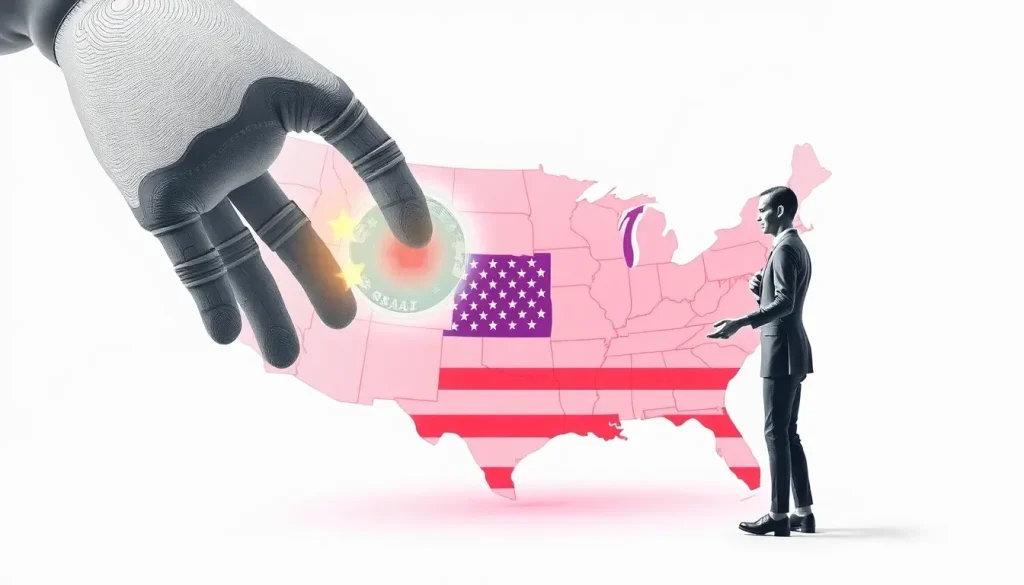AI Prevents Recession in the US, But Banks Warn of Unsustainable Growth

The current economic landscape in the United States is being heavily influenced by the rise of artificial intelligence (AI). As the nation grapples with potential recession threats, it's crucial to understand how this technology is shaping economic stability. Recent analyses reveal a striking reliance on AI and its associated technologies, highlighting both opportunities and significant challenges ahead.
The role of AI infrastructure in preventing a recession in the U.S.
As the technological landscape evolves, the investment in AI infrastructure is emerging as a pivotal factor in maintaining economic momentum. According to recent reports from Deutsche Bank and Bain & Co., the spending on AI technology is serving as a crucial buffer against a recession. This situation raises questions about the sustainability of such growth driven predominantly by AI-related expenditures.
Data indicates that without this hefty investment in technology, the U.S. GDP growth rate could be stagnant or even negative. In fact, Deutsche Bank has illustrated that the economic pulse of the nation heavily relies on software and IT infrastructure spending, a reality that brings forth both optimism and caution.
The investment trend reflects a broader strategy where technological advancement, particularly in AI, is perceived as the sole pillar preventing economic downturn. This reliance poses critical questions about the longevity of this growth model as various sectors begin to show signs of strain.
The precarious nature of tech-driven economic growth
While the current administration champions technology as a growth engine, the over-reliance on AI and tech giants highlights a precarious economic situation. The AI boom is undeniably impressive, yet it is not without its challenges. The vast investments that have propelled companies forward are not equally distributed across the entire market.
For instance, the S&P 500 index has seen significant gains, primarily fueled by a handful of tech companies, often dubbed the “Magnificent Seven.” This concentrated growth raises critical concerns about market sustainability and the potential for a correction.
- Increased profits reported by major tech players.
- Stagnant forecasts for smaller companies.
- Dependence on limited sectors for economic growth.
Investment demands and the economic footprint of AI
As we look towards the future, the scale of investment required to sustain AI growth is staggering. Bain & Co. estimates that by 2030, the demand for AI computing power will necessitate up to $2 trillion in annual revenue. Yet, projections suggest that there will be a shortfall of approximately $800 billion to meet these ambitious targets. This discrepancy creates a pressing dilemma for both investors and policymakers.
The pressure on supply chains, particularly in energy and semiconductor sectors, has intensified. Companies are contending not only with the financial aspects but also with logistical challenges that accompany such rapid technological adoption.
AI’s contribution to economic growth: A closer look
Interestingly, current economic growth is not solely derived from AI products and services. Much of the financial activity is centered around building infrastructure such as data centers and manufacturing facilities (FABs), alongside the procurement of Graphics Processing Units (GPUs). For instance, NVIDIA has emerged as a dominant force, essentially supporting the weight of the U.S. economy with its technological advancements.
This heavy reliance on a single company's growth raises concerns about the potential for economic volatility should it falter. As noted by Deutsche Bank, the very fabric of the U.S. economy is being stitched together by a few key players, making it vulnerable to shifts in market dynamics.
Balancing investment and sustainable growth
The ongoing investment in AI is a double-edged sword. While it is currently preventing a recession, the sustainability of this model is in question. The critical challenge lies in whether the ongoing influx of capital will translate into real, tangible economic growth before the weight of these investments becomes too burdensome.
As President Trump navigates this complex landscape, the stakes appear higher than ever. His administration's policies are geared towards enhancing tech capabilities, but the inherent risks involved in this strategy cannot be overlooked.
Future implications and the quest for economic resilience
The U.S. economy stands at a crossroads, with AI acting as both a catalyst for growth and a potential source of instability. The key questions that arise include:
- Can the current investment levels be maintained in the long term?
- Will smaller companies find opportunities for growth amidst the dominance of tech giants?
- How will geopolitical factors, such as competition with China, influence U.S. tech policy?
As the economic narrative unfolds, the impact of AI on job markets, productivity, and overall economic health will be critical areas to monitor. The delicate balance between fostering innovation and ensuring sustainable growth will determine the resilience of the U.S. economy moving forward.
To gain further insight into the current economic climate, you can watch the following video, which delves into the relationship between AI and the U.S. economy:
The interplay between AI advancements and economic policy is not just a matter of technological progress; it is a complex web that affects every facet of American life. As the nation forges ahead, understanding these dynamics will be crucial for businesses, investors, and policymakers alike.




Leave a Reply